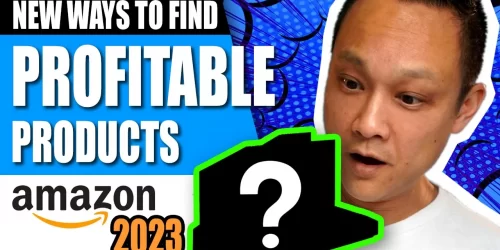How to Start an Amazon Business & Sell Your First Product in 2024
Embarking on your journey as an Amazon seller can be exciting and profitable. However, the process comes with its challenges. In this guide, I’ll walk you through overcoming the three main hurdles most new sellers face: setting up and verifying your Amazon seller account, registering your brand, and understanding the essentials of product barcoding.
Step 1: Setting Up and Verifying Your Amazon Seller Account
Choosing Your Selling Plan
When starting, you’ll have two main options for Amazon selling plans:
- Individual Plan: No monthly fees but charges $0.99 per sale. This plan lacks advanced features like creating promotions and using PPC advertising.
- Professional Plan: Costs $39.99/month but includes advanced features and eliminates the per-sale fee.
For beginners, I recommend starting with the Professional plan because Amazon waives the monthly fee until you start selling. This setup allows you to learn the system without immediate costs.
Registration Process
To begin the registration, visit sell.amazon.com. Decide if you will use an existing Amazon account or create a new one for selling. A separate account helps keep personal purchases and business transactions distinct, simplifying bookkeeping.
Important Tips:
- Use an email from your own domain if possible to enhance credibility and reduce the risk of delays in the verification process.
- Ensure your documentation is prepared, including ID, bank account information, and a mobile phone number.
Step 2: Brand Registration and Amazon Brand Registry
Why Register Your Brand?
Registering your brand gives you control over your product listings and access to marketing tools such as Amazon A+ content. Brand registration also allows you to protect your intellectual property on Amazon’s platform.
Steps to Register Your Brand:
- With a Trademark: If you have a registered trademark, you can enroll directly in Amazon’s Brand Registry, which provides additional benefits like enhanced content and brand protection.
- Without a Trademark: You can still register your brand on Amazon to prevent others from selling under your brand name.
Brand Registry Advantages:
- Protection from counterfeit products.
- Access to powerful advertising tools and detailed analytics.
- Ability to create a branded storefront.
Step 3: Understanding Barcodes
Types of Barcodes:
- UPC (Universal Product Code): Required for product identification on Amazon and in retail stores.
- Amazon’s FNSKU (Fulfillment Network Stock Keeping Unit): Used for tracking inventory within Amazon’s fulfillment centers.
Purchasing Barcodes:
- Always purchase UPCs directly from GS1 to ensure they are authentic. This prevents potential listing issues on Amazon.
Applying Barcodes:
- If using Amazon FBA, opt for Amazon’s FNSKU for a smoother fulfillment process.
- If selling in other retail environments or through FBM (Fulfillment by Merchant), UPCs will suffice.
Final Tips
- Be Patient: The registration and verification process can take time. Prepare for potential delays by starting early.
- Stay Informed: Keep up with Amazon’s policies to avoid account suspension or listing issues.
- Leverage Amazon’s Tools: Once verified, use Amazon’s advertising and promotional tools to boost your product visibility and sales.
Starting an Amazon business requires careful planning and attention to detail. By understanding these foundational elements, you’ll be better equipped to launch your Amazon selling career successfully in 2024.






